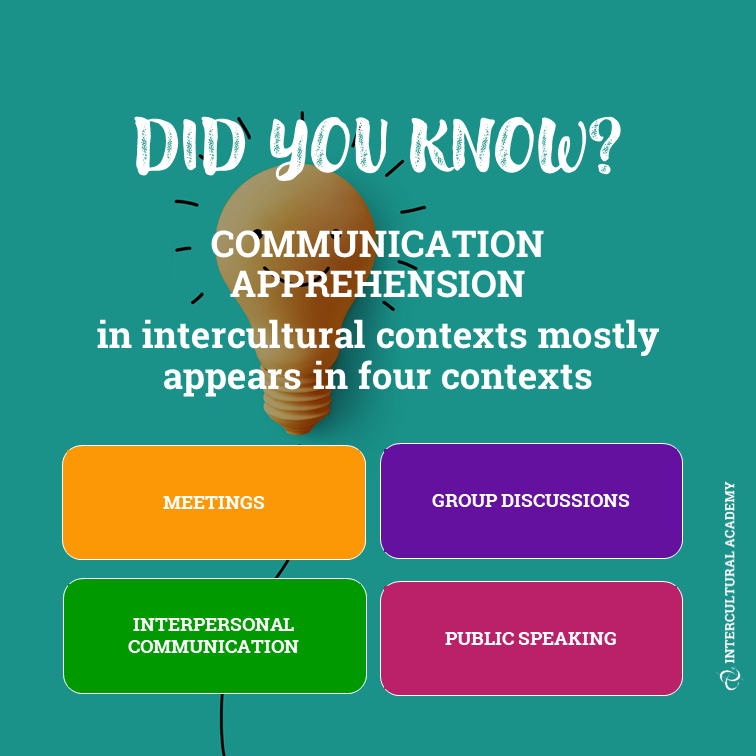Intercultural training – What is the right approach?

Reading Time: 5 Minutes
Author: Geert van de Ven
Translation Alexandra Jandausch
Last Tuesday, my colleague Geert van de Ven from our strategic partner Dutch in Dialogue published an article about generalizations about culture and communication in textbooks and the expectations that expats have about living and working in The Netherlands. His article was really thought provoking, so I put on my thinking cap and came up with a few ideas on what to look out for in intercultural training.
Textbooks need to simplify, and from a pedagogical perspective it can make sense to describe general rules and present learners with cookie cutter scenarios to kick off a learning process and organize information in a manageable way. But this is only half the truth. In linguistics, the battle between prescriptivists and descriptivists is longstanding. Thankfully, language training has undergone some fundamental changes, and the approach today is much more oriented towards natural communication than it was twenty years ago. However, looking at books used in schools, the prescriptivist approach is all too common, even today.
Cookie cutter or bespoke?
So, looking at intercultural training, what is a good approach? When moving to a new country, there are so many aspects, visible and invisible, that make adapting to a new culture quite challenging. How do you put human professional and personal behavior into rules and regulations? There is of course the law, that gives us broad guardrails about what is and isn’t allowed. We have cultural norms, societal rules, hierarchies, and expectations. But how do we put them into a training course without overburdening the learner? And perhaps the more important question: Does it make sense to set up a script, or schema for human behavior?
Even today, the use of critical incidents, stereotypical situations, cultural dos and don’ts, and little guides for business etiquette is very common. But what is the effect of these cookie cutter materials? Spoiler: They are not helpful.
Language and culture – Rules or meaning?
In cognitive linguistics, the sender – receiver-model of communication has been deemed invalid since the late 1970s. Michael Reddy’s groundbreaking article on “The conduit metaphor” and George Lakoff’s work on conceptual metaphor have shown that meaning is never unpacked but constructed along carefully extracted ontological structures. Mental space theory, and especially conceptual blending theory have shown how creative, and in fact, how literary the human mind is. Semantics first – EEG studies show that we look for meaning long before we look for syntactical structures. (Compare the N400 P600 phenomenon).
For human behavior the same “mechanisms” apply. We tend to make sense before we look for the underlying rules. Consequently, dos and don’ts, rules for behaving appropriately are an obstacle to authentic behavior and adaptation.
Coming from the perspective of instructional design, cognitive linguistics and educational psychology, we decided to take a very different approach: Expats need to learn meta strategies that allow them to continue learning long after they have completed a training course. In intercultural research there is a broad consensus about necessary competencies that need to be acquired to be interculturally savvy. We have built a curriculum along these competencies that allows for flexibility and real-life situations that are incorporated in the training. Each expat is different, as far as their previous education, future professional role, family situation, communicative preferences, and learning needs and wants are concerned. Only a flexible approach, that is based on meta competencies enables the delivery of a training program that results in an expat’s ability to understand and adapt to novel situations in their professional and personal life.
The pitfalls of rigid models
A very popular model used in intercultural training, despite many facilitators knowing better, is the iceberg. It is the model most widely used in intercultural trainings. However, the metaphor of an iceberg, with a visible tip and an invisible foot is somewhat problematic, as the metaphor implies that culture is an actual thing. Culture is a process, a consensus that is the result of people living in a society and agreeing on certain values, beliefs, sharing language, traditions, and so on and so forth.
Using the metaphor works, but it should not happen without further explanation, let alone using the metaphor and setting it equal to culture.
Another example of a reductive approach that is unhelpful are the so-called dimensions of culture. Cultural dimensions such as individualistic, collectivistic, masculine, feminine, hierarchical, monochronic, diachronic, and so on are very popular, because they are so straightforward and seemingly easy to memorize and use.
From the article Geert van de Ven has written, the example of the couple that has moved to Winterswijk in the middle of the soccer world cup is brilliant in this regard. According to the cultural dimensions, “the Dutch” are highly individualistic, so how do we explain the happy community that parties in the middle of the street, sharing drinks and TV screens? Can we say that the Dutch are X? No, we can’t. In fact, we cannot even say that the Dutch are Y. The Dutch are a group of 17 million individuals, each with their own ideas, backgrounds, likes, dislikes, and behaviors. Of course, they share a language, laws, history, and some values, etc. But we do not have an archetypical Dutchman or Dutchwoman. The use of Hofstede’s dimensions can be ascribed to the desire to simplify and classify. However, using these models leads to a reinforcement of stereotypes, negative conceptual priming and does not allow for the cognitive and behavioral flexibility needed by expatriates and repatriates to develop a second culture baseline. [comp. Bolten, J. (2002). Kann man Kulturen beschreiben oder erklären, ohne Stereotypen zu verwenden? Einige programmatische Überlegungen zur kulturellen Stilforschung] Using coarse grain approaches is easy, for the trainer. Because prescribing rules and norms is so much easier than reflecting on expectations, backgrounds and the challenges that come with living and working, not only in a new country, but also in a new language.
Why coarse grain approaches do not work
The problem of these coarse grain approaches are obvious:
- Cultures are confined by national (political) boundaries
- Attributing values to a (national) culture is judgmental
- Abstract values are unsuitable to account for the behavior of an individual
- Abstract value do not give any information about everyday behavior of individuals who live in a culture
- Abstract values do not give any information about intercultural encounters
- The identification and definition of dimensions are attributed to a culture from the outside and strengthen ethnocentric points of view
- The understanding of culture is based on a false assumption: cultures are not containers, but products of societies and sub-groups of societies
- Dimensions of culture are descriptive in nature and offer no explanation
- Dimensions of culture prescribe the description of a culture and hold no psychological reality, because culture becomes virtual
- The data used by Hofstede stems from 1968 and 1972 and is related to country specific characteristics of the respective IBM culture
- Cultural change processes that took place in the past 40-50 years have not been taken into account and have let to false assumptions that cause misunderstandings and errors when it comes to many Asian cultures.
Using fine grained approaches on the other hand is also not very helpful, because the picture becomes so scattered, that it becomes hard or almost impossible to take anything away from a training course.
What can I do to find a good training course?
There is no simple answer, because often intercultural training courses are a black box. Therefore, we decided to take a different route:
We have a curriculum that covers all the meta-competencies where there is a broad consensus among researchers that these competencies are necessary. The training program is only rigid on the cognitive level. The factual knowledge such as theoretical background and case studies from real-life business and everyday situations is a highly interactive multimedia online program with four modules.
To facilitate the learning process, and more importantly the knowledge transfer process into life as an expat, the program is very flexible, because the learning levels of affect and behavior are tailored to the exact needs of the participant. This means, that every learner brings their own cases, questions, and challenges into the sessions and there is ample room for discussion, trying out strategies, simulating situations and practicing.
So, the best approach for a learner is one that combines cognition, affect, and behavior through a blended learning program that entails behavioral and linguistic meta-competencies.
Conclusion
Intercultural learning is far more complex than learning dos and don’ts, business etiquette and how to behave at a dinner party. Successful intercultural training requires the following:
Facilitating a learning process that supports expats in
- Becoming aware of their own cultural baseline
- Acquiring metacognitive strategies: learning to think about thinking and perception
- Acquiring general knowledge about culture and social groups
- Acquiring specific knowledge about a target culture
- Raising awareness of their own belief systems and behavioral patterns
- Acquiring cognitive flexibility
- Acquiring openness
- Enhancing ambiguity tolerance
This list is non-exhaustive.
Intercultural training and language training are an investment that needs to be justified. The decision for a training program should be based on quality and content. With our programs, the decision becomes simple, because as a global mobility expert you can view the programs and the outcomes, before you book. Go to https://intercultural.academy and to https://www.dutchindialogue.com/programs to take a preview.
To learn more and for 20 minute consultation call, please contact us per email at info@bilingualsolutions.nl, or, for in-depth language training write to our strategic partner Geert van de Ven from Dutch in Dialogue at info@dutchindialogue.com








Recent Comments